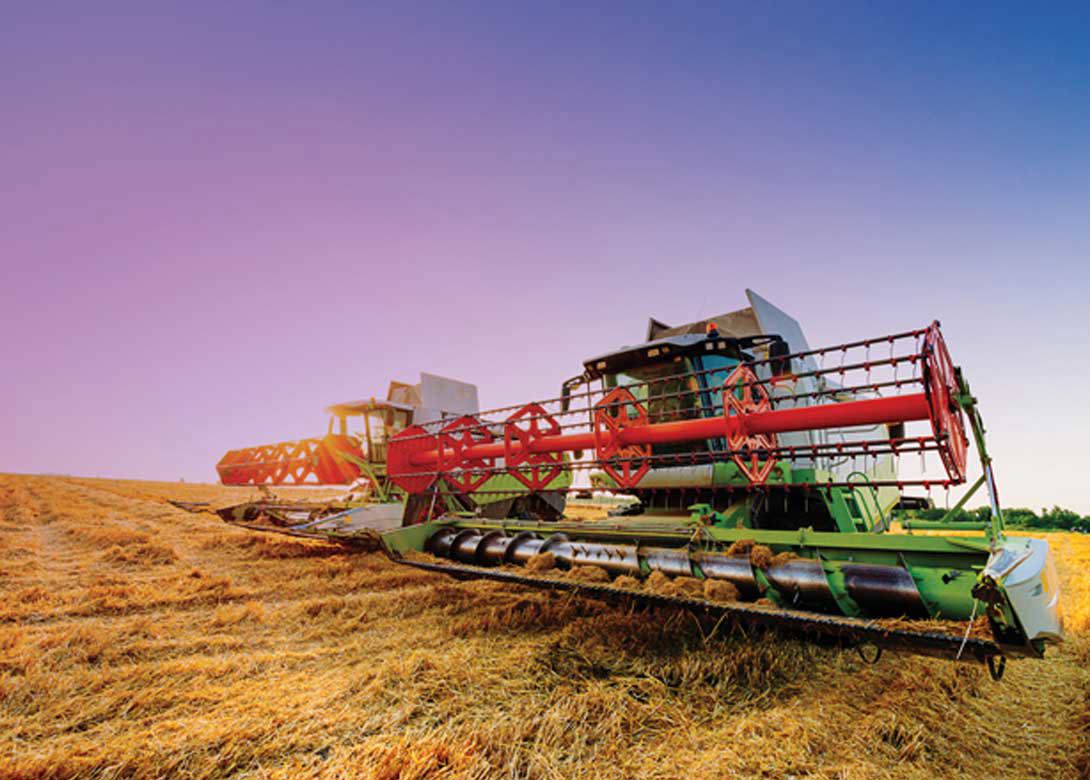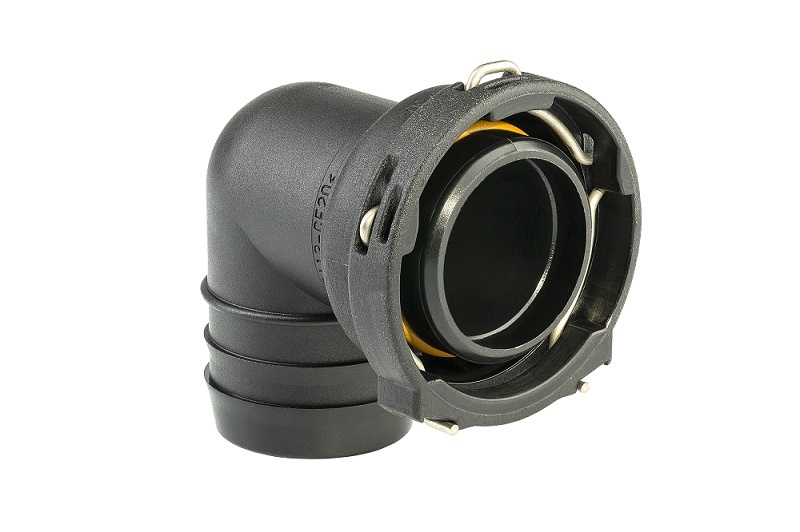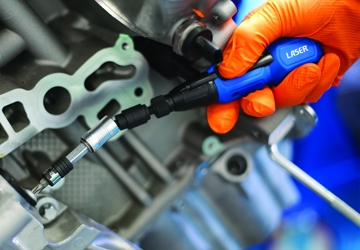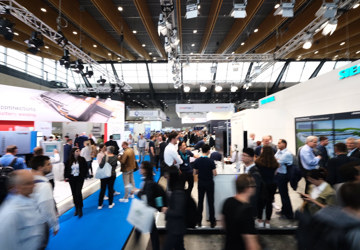

One of the defining trends in the automotive industry currently is the development of more environmentally friendly vehicles. While alternative drives, such as electric or hydrogen engines, are on the rise, the majority of vehicles globally are still using combustion engines - sometimes in combination with other engine types, such as hybrid cars.
One of the measures concerning climate warming is to implement tighter emissions legislation, which is happening in many countries around the world. Vehicles need to develop towards reduced fuel consumption and improved efficiency, for example consuming fewer resources for a specific performance.
Emission reductions versus performance
However, especially in the case of heavy-duty vehicles, such as trucks, agricultural and commercial vehicles as well as off-road equipment, the propulsion at the same time needs to deliver high levels of driving performance. This leads to increased temperatures and pressures in media-carrying lines, thus also impacting the joining technology used to connect these lines. Consequently, the fasteners and connectors need to withstand increasingly extreme conditions.
“The demand in the market for joining technology which is especially suited for heavy-duty applications is increasing”, says Stephan Senftleben, leader of the EMEA product engineering team for Engineered Joining Technology (EJT) plastic products at NORMA Group. “One question we asked ourselves in the last year was ‘how can our customers continue to use the plastic systems with their numerous advantages, such as easy and quick installation and light weight, while at the same time pressures and temperatures on media-carrying lines and the connecting fastening elements are increasing?’.”
This is how the idea for developing the V2-XC quick connector began. “Specifically, clients were in need of a quick connector for systems for air intake and crankcase ventilation that would be characterised by a long lifetime in extreme conditions,” explains Stephan. “Before, they had used NORMA Group’s V2 quick connector, which worked perfectly for passenger vehicles and has been popular in the market since the 1990s, but was not intended for long-term usage in heavy-duty applications.” The V2 connector is used with lines carrying media such as air, oil and fuel vapors in automobiles. Its locking ring is made of plastic.
Balancing robust design and easy installation
The requirements for the new product for heavy-duty applications were:
• A robust design enabling a long lifetime. For example, a long-distance truck can travel as far as five to eight million kilometers until it is finally scrapped, while for most passenger cars, the lifetime distance estimation is at roughly 300,000 kilometers.
• Withstanding extreme conditions in heavy-duty vehicles with regards to temperature resistance, pressure endurance, or also contaminants within the air intake system. The latter have a higher impact in (e.g. a harvest machine that is out on the fields every day in contrast to a passenger car driving on paved roads only).
• Easy installation without any additional tools, ‘right on the spot’ where the vehicle is normally used, instead of having to perform the installation in a garage, when the connector needs to be replaced.
• Absolute reliability, which is always a requirement for function-critical parts such as quick connectors: if only one element breaks or leaks, the function of the entire vehicle can be affected.
Innovation is collaboration with the customer
On that basis, NORMA Group started the development process. “Our philosophy has always been to involve our customers in product innovation and to collaborate with them. This allows us to come up with solutions that perfectly satisfy their demands”, mentions Stephan Senftleben. “We believe that for innovations that really matter to the customers, the motto should be: Innovation is collaboration.”
The first step was to find out exactly what the requirements of the customers for the new product were. On that basis, NORMA Group came up with the idea of a ‘heavy-duty’ version of the popular V2 connector – the V2-XC (X-treme Conditions). That way, customers would be able to continue using the same plastic tubes and spigots they used before, while giving the systems an additional performance boost.

Discussing ideas in the think tank
Next, engineers from different departments at NORMA Group met in a think tank to discuss the innovation thoroughly: Which materials could be used? What could the production process look like? How could the new quick connector withstand the extreme conditions in heavy-duty applications? “Participants from product development both for plastic and metal products as well as colleagues from application engineering joined. It was a very creative mixture of perspectives, experience and production know-how”, Sven Reuter describes the think tank. The product engineer in Stephan Senftleben’s team managed the development of the V2-XC.
One of the main questions was how the connector could withstand high temperatures and pressures while maintaining its easy-to-install closing mechanism. The plastic material used needed to be more robust than before, while it still had to remain flexible enough for an easy and safe installation. Therefore, the engineers came up with a new closing mechanism - a stainless steel locking ring which is no longer pulled over the outside of the connector head during installation, but is rather integrated into the inside of the head. This also makes the connection very secure once installed, as the connector cannot slip off the spigot. At the same time, the installation remains quick and easy without the need for any special tools. The metal locking ring also has a longer lifetime compared to a plastic ring for example, which again fits the long lifetime requirements of heavy-duty vehicle parts.
Computer-assisted concept testing saves time and money
Based on these ideas, the project team developed the final concept and sketches. The V2-XC became an innovation project at NORMA Group and underwent the official Product Lifecycle Process (PLC). This process defines the various stages of product development in detail - from concept validation via product and process validation to serial production. “We used the method of Finite Element Analysis (FEA), amongst others, where the computer helped us model the product in a virtual environment. Thereby, we were able to identify and solve potential structural or performance problems, while keeping the process cost-effective and fast, as we did not need to build a lot of prototypes for testing”, explains Sven Reuter.
After all this work, the engineers produced the first 3D printed prototypes and sent them to the customers. Did they like the product? Did it fulfil all requirements? Were there any changes necessary? After a thorough exchange with its customers, NORMA Group finalised the new product. “From the first idea to the final product, it took us less than a year to develop a solution which was perfectly fitted to our customers’ needs”, summarises Sven Reuter.
Successful field testing and finalisation of the new product
One of the clients then launched an extensive field test: 1,800 agricultural vehicles in the US were equipped with the new V2-XC quick connector. The test had a positive outcome - the customer decided to use the V2-XC in all heavy-duty applications in the future. With that, the development process was concluded – at least for the time being, Stephan Senftleben adds: “The V2-XC can be adapted in a flexible way to various customer requirements. For example, it can be made from different material mixes of polyamide and fiberglass for different applications. We also expect an increasing demand for high-temperature quick connectors in the future.”
Currently, another customer from the truck industry is also testing the V2-XC in their labs as well as in the field. NORMA Group’s plant in Pilica, Poland, is equipped to start serial production of the new quick connector at any time now. A patent application has been filed with the German authorities.
The result of the innovation process: a quick connector for heavy-duty vehicles
With the V2-XC, NORMA Group offers a system suited especially for heavy-duty applications with a high performance. It has a long lifetime, withstands extreme conditions in heavy-duty vehicles (e.g. temperatures of up to a continuous average of 150°C), overpressure of up to five bar, and pull-off force of up to 1,200N. Furthermore, the new quick connector is quick and easy to install with its special closing mechanism and stainless steel locking ring, ensures a very secure connection and is compatible with existing spigots designed for use with the V2 system. The material combination of polyamide and fiberglass can be varied according to customer needs, (e.g media, temperature and application). Wherever possible, recycled plastic granules are used – the percentage of recycled material depends on the customer specifications, (e.g for air-transporting systems a higher share of recycled granules can be used compared to fuel lines).
“We are really satisfied with the result of this innovation process”, Stephan concludes. “Collaborating with our customers has always been at the heart of developing new products at NORMA Group.”

Having spent a decade in the fastener industry experiencing every facet – from steel mills, fastener manufacturers, wholesalers, distributors, as well as machinery builders and plating + coating companies, Claire has developed an in-depth knowledge of all things fasteners.
Alongside visiting numerous companies, exhibitions and conferences around the world, Claire has also interviewed high profile figures – focusing on key topics impacting the sector and making sure readers stay up to date with the latest developments within the industry.





